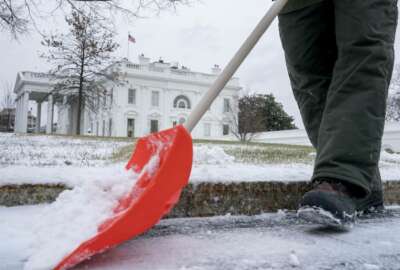As temperatures reached record lows across much of the country and sudden snow squalls snarled traffic in the Washington, D.C., area this week, most employees are still adjusting to relatively recent regulatory changes to federal leave policy during major weather events.
The Office of Personnel Management updated its dismissal and closure procedures back in November to reflect new changes under the Administrative Leave Act. Congress in 2016 instructed OPM to create four different types of leave, including administrative leave, investigative leave, notice leave and a new kind of “weather and safety leave.”
It’s been more than two years and OPM hasn’t yet released regulations describing the terms of “administrative” or “investigative” leave, as created by Congress. But the agency did release regulations describing “weather and safety leave” back in April.
In general, the regulations allow OPM to grant “weather and safety leave” due to an “act of God:” a terrorist attack or other emergency condition that prevents employees from safely traveling to or performing work at the office or other work site.
But teleworkers are in a different boat. If you’re eligible and equipped to telework, your agency will generally expect you to work remotely instead of taking a snow day — or what’s more accurately described as weather or safety leave. Federal employees who aren’t eligible to telework can use weather and safety leave, as long as OPM has granted it.
“Agencies should continue to promote and incorporate telework into their agency emergency planning so that employees will be able to telework effectively during emergency situations, thereby allowing the federal government to maintain productivity and support their agency mission,” OPM said.
OPM’s most recent dismissal and closure guidance describes a wide variety of possible scenarios for teleworkers and non-teleworkers alike during emergency or weather-related situations.
Of course, there are always exceptions and changes to the norm depending on an employee’s home and child care situation and the circumstances of the weather event. Federal News Network has mapped out a few potential scenarios, and how you should respond to them according to OPM guidance, below.
See a full roundup of potential scenarios here.
As always, federal employees in the Washington, D.C., area should look for an operating status announcement from OPM. These announcements apply to all employees working at agencies inside the Washington Capital beltway.
OPM advises federal employees from taking their own, sudden action during a weather event, because the agency itself works with local and regional officials to coordinate announcements based on traffic patterns, for example.
Employees working at agencies outside the Washington-area beltway should look for announcements from their own agencies. Many employees can also look for announcements from their federal executive boards (FEBs), which are located in 28 metropolitan areas across the United States. FEBs consult with the General Services Administration, Federal Protective Service, National Weather Service and local public safety officers to give agencies up-to-date information.
Graphics by Amelia Brust, Federal News Network digital editor
Copyright
© 2024 Federal News Network. All rights reserved. This website is not intended for users located within the European Economic Area.
